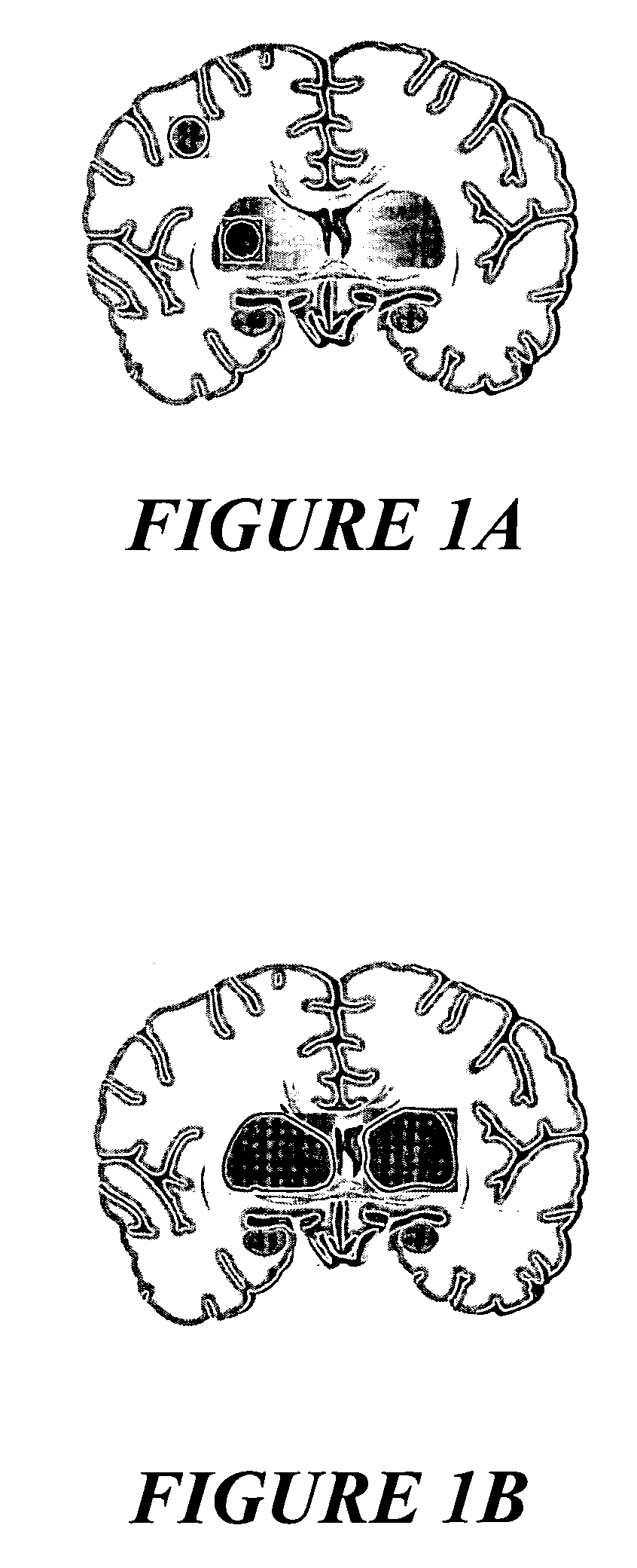Mass spectrometric differentiation of tissue states
a mass spectrometry and tissue state technology, applied in the field of mass spectrometry differentiation of tissue states, can solve the problems of reducing the efficiency of maldi analysis, evaporating explosively, and absorbing energy of matrix substances, and involving a lot of time in sample preparation
- Summary
- Abstract
- Description
- Claims
- Application Information
AI Technical Summary
Benefits of technology
Problems solved by technology
Method used
Image
Examples
Embodiment Construction
[0034]One preferred embodiment begins with the production of a microscopic tissue section, preferably from a deep-frozen piece of tissue, with a microtome. The microscopic tissue section is applied to a suitable support. This support can be a glass specimen slide, for example, whose surface is equipped with a transparent but conductive surface coating for subsequent use in the mass spectrometer. Other supports, for example metal supports or supports made of electrically conductive plastic, can also be used, however. The microscopic tissue section can then be stained in the usual way, although care has to be taken to use a stain which does not interfere with a subsequent mass spectrometric analysis of the tissue constituents. Fluorescence dyeing methods can also be used if they do not restrict the mass spectrometric analysis.
[0035]After this, a microscopic image is taken, with transmitted or reflected light, from the microscopic tissue section, and is later used to lay under the resu...
PUM
| Property | Measurement | Unit |
|---|---|---|
| diameters | aaaaa | aaaaa |
| diameters | aaaaa | aaaaa |
| diameter | aaaaa | aaaaa |
Abstract
Description
Claims
Application Information
 Login to View More
Login to View More - R&D
- Intellectual Property
- Life Sciences
- Materials
- Tech Scout
- Unparalleled Data Quality
- Higher Quality Content
- 60% Fewer Hallucinations
Browse by: Latest US Patents, China's latest patents, Technical Efficacy Thesaurus, Application Domain, Technology Topic, Popular Technical Reports.
© 2025 PatSnap. All rights reserved.Legal|Privacy policy|Modern Slavery Act Transparency Statement|Sitemap|About US| Contact US: help@patsnap.com

